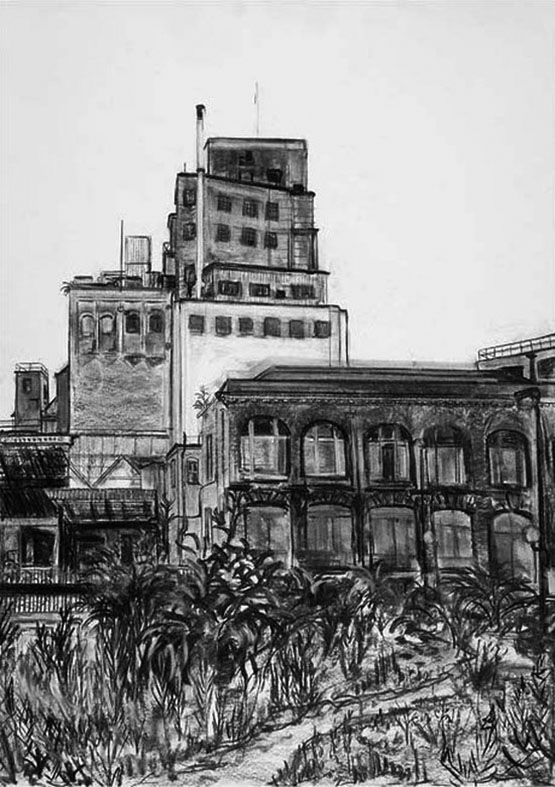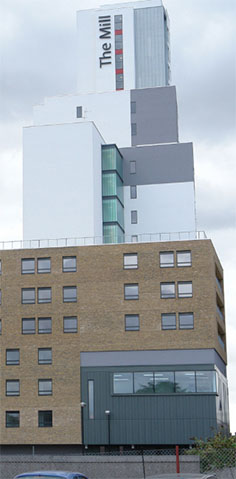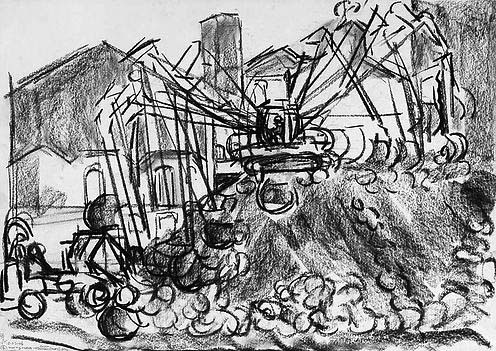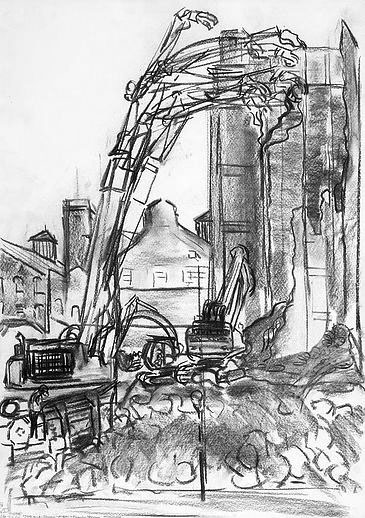- Screen Colours:
- Normal
- Black & Yellow
Cranfield Brothers flour mills dominated the Ipswich Docks since 1884. At the beginning of the twentieth century they imported wheat from all over the world.

 2009 view from The Ipswich Society Image Archive
2009 view from The Ipswich Society Image Archive
However, modernisation after 1926 led to the increased use of native wheat. In the 1960s Cranfield’s expanded to include the large-scale Betabake bakeries in the region. The company came to enjoy a reputation for a high standard of quality. By 1971 they employed thousands of people in the town and operated a fleet of 950 vehicles. However, the continuing need for capital investment and limited space on the docks for future expansion led to the decision to close Cranfields in the late 1990s.
Many people driving or walking towards Wherstead Road or the railway station during the major upheavals around the Wet Dock, Key and College Streets in particular between 2005 and 2009, will have noticed Valerie Irwin, standing in all weathers drawing the changing scenes of demolition, materials reclamation and eventual rebuilding, focusing particularly on Cranfield’s complex. Attending the site nearly every day with unprecedented access, Valerie compiled a vast selection of observational drawings in charcoal, reflecting the nature of the work.

This 'Change in Charcoal' collection comprises over 4,750 charcoal drawings, sketchbooks, digital images, diaries and oral history. As a visual record of a changing industrial landscape it is unusual in that it is as much an artistic endeavour as a documentary one. Accordingly, the Suffolk Record Office has identified this unique collection as a valuable addition to the existing Cranfield’s Mill archive.
A public appeal was launched in Quay Place on 25 September 2018 which will fund the preservation, cataloguing, digitisation, oral history and ultimately the deposit of this collection into the Suffolk Records Office archives. Interest will come from historians, people who worked at the docks but also builders, architects, artists and students wishing to study this fascinating record of the colossal change in the town’s history.
 The artist, drawing in charcoal on white A3 cartridge paper, captured moving vehicles and men at work, concentrating on shapes and spaces created by the activity. All her work was completed on site and she never touched the drawings after returning to her studio. Valerie had no idea that this was the start of a process that would last for many months and eventually she was invited on to the site by the contractors to continue her work. Her observational drawings record all aspects of Cranfield’s Flour Mill. Valerie is sentimental about the loss of industry and employment expressed through her work. She conveys a communal sense of loss as the demolition stage drew to a completion.
The artist, drawing in charcoal on white A3 cartridge paper, captured moving vehicles and men at work, concentrating on shapes and spaces created by the activity. All her work was completed on site and she never touched the drawings after returning to her studio. Valerie had no idea that this was the start of a process that would last for many months and eventually she was invited on to the site by the contractors to continue her work. Her observational drawings record all aspects of Cranfield’s Flour Mill. Valerie is sentimental about the loss of industry and employment expressed through her work. She conveys a communal sense of loss as the demolition stage drew to a completion.
R.G.
[https://www.valerieirwinarchiveproject.com to contribute to the appeal]
Charcoal illustrations by Valerie Irwin